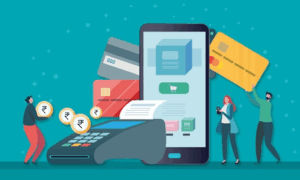The banking industry continues to be surrounded by uncertainty and there is no clear path for success. While banks are rethinking their organizational structure to be more innovative and develop more digital oriented products, fintech startups are taking the stage. These startups are trying to reduce the complexity and increase the transparency of banking services for mobile first generation. Some of them are focused on savings and personal finance. They are probably going to reshape the future of savings. So what is going to be the future of savings.
Nobody argues that savings are important. Savers have the pleasure of having money in their bank account in order to feel safe or to make an important purchase with the saved money. But Just to highlights more than 70% of adults have less than 1000$ savings . The formula of savings is very simple: Savings = Income – expenses. So it is necessary to have certain amount of income which is enough to cover living and related expenses and also have some amount left for saving purposes. Sometimes people cannot just afford it because they don’t have that much incomes. But sometimes people can afford savings but they just waste on spending money rather than saving. 57% of shoppers end up spending more than they have planned .
Though being very important, savings are boring. Not surprisingly there are lots of interesting gamifications making people to spend. Packaging bundles are just one type of so many nice things making you to make easier spending decisions. Just a small thing that make shopping and spending less boring. But we don’t have much of these types of cool things to encourage people to save easily. And in this digital first era when everything is digital, the savings still are happening in the branches of traditional banks. 53% of customers are visiting their bank branch at least once per month to make deposits or withdrawals. But you probably also think that visiting bank branches are boring. So why cant we “ask” a bank to put $20 on our saving account but have to visit the bank?
On the other note, Technology and AI are taking over the world. And banking is not an exception. In banking, they help you better and faster analyse the data to help you make better decisions. Whether it is a saving decision or a spending one, they are just assisting you to make a smarter one. The trends are very fast. Here are couple of examples: new generation of apps make transferring money faster and less expensive; advanced standalone firms use more complex algorithms to create and actively manage portfolios, people use mobile p2p platforms to lend and borrow money without visiting a bank, people give saving platforms access to their personal banking accounts to make savings on behalf of them, etc. And the banks seem finally to have realized that technology can be a better tool to help them understand how products should be delivered.
As technology and AI are taking over the financial industry in various ways people are getting used to fintech products. Just to bring a small example, Business Insider forecasts that robo-advisors will manage $8 trillion in global assets by 2020. Well, people are getting used to self-driving cars, people are used to buying things online, and with all these techie atmosphere people are small by small relying on tech to make financial decisions on their behalf: investments on their behalf or manage their funds or making savings. So as the trends move forward, people probably will be more adoptable for tech to save money and manage their finances.
So as just to sum up, the savings future is something like this: mobile solutions powered by AI making saving decisions on behalf of individuals which are smarter and better. So with limited opportunity for significant improvement in delivering simplified savings products, and continued pressures from mobile first oriented consumers, it is clear that doing more of the same and designing another savings product is not a winning strategy. In fact, most organizations need to determine what model they need to work towards and to commit the required financial and human resources to make the needed transition healthier and painless.



































